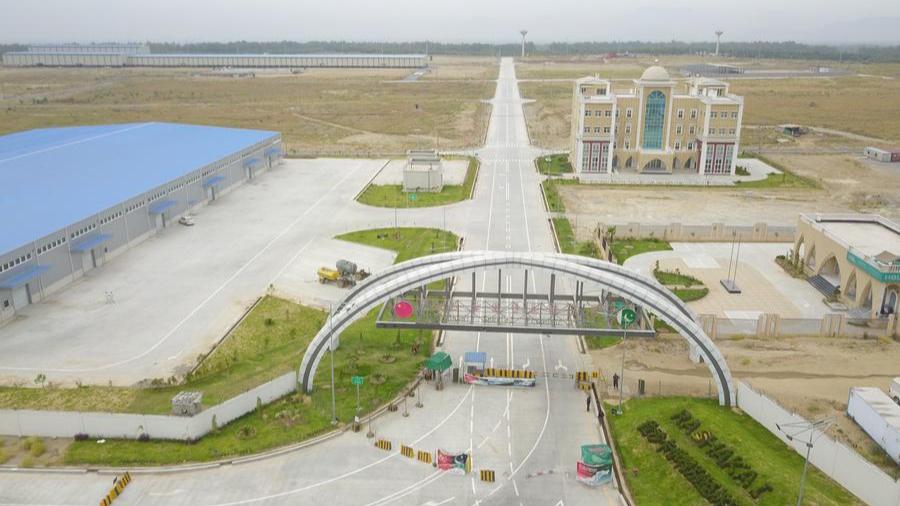Moaaz Awan (L) works at the Karot Hydropower Plant in Pakistan's eastern Punjab province in May 2023. (Xinhua)
Like what happened to a few other countries, the Chinese investment may result in some foreign exchange outflows, but it added to the infrastructure much needed by Pakistan, Mohammad Zubair Khan, a former Pakistani commerce minister has said.
by Ali Jaswal, Jiang Chao
ISLAMABAD, June 9 (Xinhua) -- The China-proposed Belt and Road Initiative (BRI) is a game changer that re-directs global trade, a Pakistani economist has said.
Many countries that have a comparative advantage could not enjoy that advantage due to disconnection with other countries, Mohammad Zubair Khan, a former Pakistani commerce minister, told Xinhua in a recent interview.
"With the expansion of the BRI connectivity that was planned and envisioned by China, I think that will change, and we will all benefit from the BRI structure," he said.
Highlighting the China-Pakistan Economic Corridor (CPEC), one of the BRI's flagship projects, the economist said it is connecting the warm waters of the Arabian Sea and the Persian Gulf with the entire Asia that lies to the north.
Launched in 2013, the CPEC is a corridor linking the Gwadar Port in southwest Pakistan's Balochistan province with Kashgar in northwest China's Xinjiang Uygur Autonomous Region, which highlights energy, transport, and industrial cooperation in the first phase, while the new phase expands to fields of agriculture and livelihood, among others.
"It's not just about trade with the big economy of China, but the Central Asian economies. They can all be connected through the links into CPEC," he said.
The development of Gwadar port under CPEC would play a major role in reducing the bottlenecks Pakistan had been facing in terms of trade, connectivity and access to the international markets, Khan said.
The CPEC investment is an integrated approach towards facilitating Pakistan's connectivity with the entire world, he said.
"So it is very essential that Gwadar is seen in a positive light by all our neighbors as it helps our integration in the region and across the globe," said the economist.
This aerial photo taken on May 23, 2023 shows the Rashakai Special Economic Zone under the China-Pakistan Economic Corridor in the northwest Khyber Pakhtunkhwa province of Pakistan. (China Road and Bridge Corporation/Handout via Xinhua)
The economist who represented Pakistan at the first ministerial conference of the World Trade Organization, and has vast experience working with the World Bank and the International Monetary Fund, rejected the West's allegation that the BRI's investment model is exploitative in nature and generates debt traps for the countries.
"The Western model of foreign investment is also the same, so why will Chinese investment be detrimental to the developing world? That is not," he said, noting that the notion that the CPEC project has created a debt burden on Pakistan is factually incorrect.
Most of Pakistan's debt is owed to Western creditors while China's credit accounts for a very small portion of Pakistan's total indebtedness, Khan said, adding that the government is indebted in the local currency to the domestic banks as well.
"So, the debt problem has to do with the macroeconomic management," he said.
The economist said the Chinese investment in CPEC has been initially in the infrastructure which the South Asian country was lacking.
It was not driven by China's own interests, but suited the development needs of Pakistan, he said.
Like what happened to a few other countries, the Chinese investment may result in some foreign exchange outflows, but it added to the infrastructure much needed by Pakistan, Khan said.
In the next phase, once trade with China and other countries begins, following the development of the industrial, agricultural and service sectors, the issue of foreign exchange outflows, which is incorrectly termed as a debt trap, will be addressed, and there will be foreign exchange inflows into Pakistan, he noted.






 A single purchase
A single purchase









